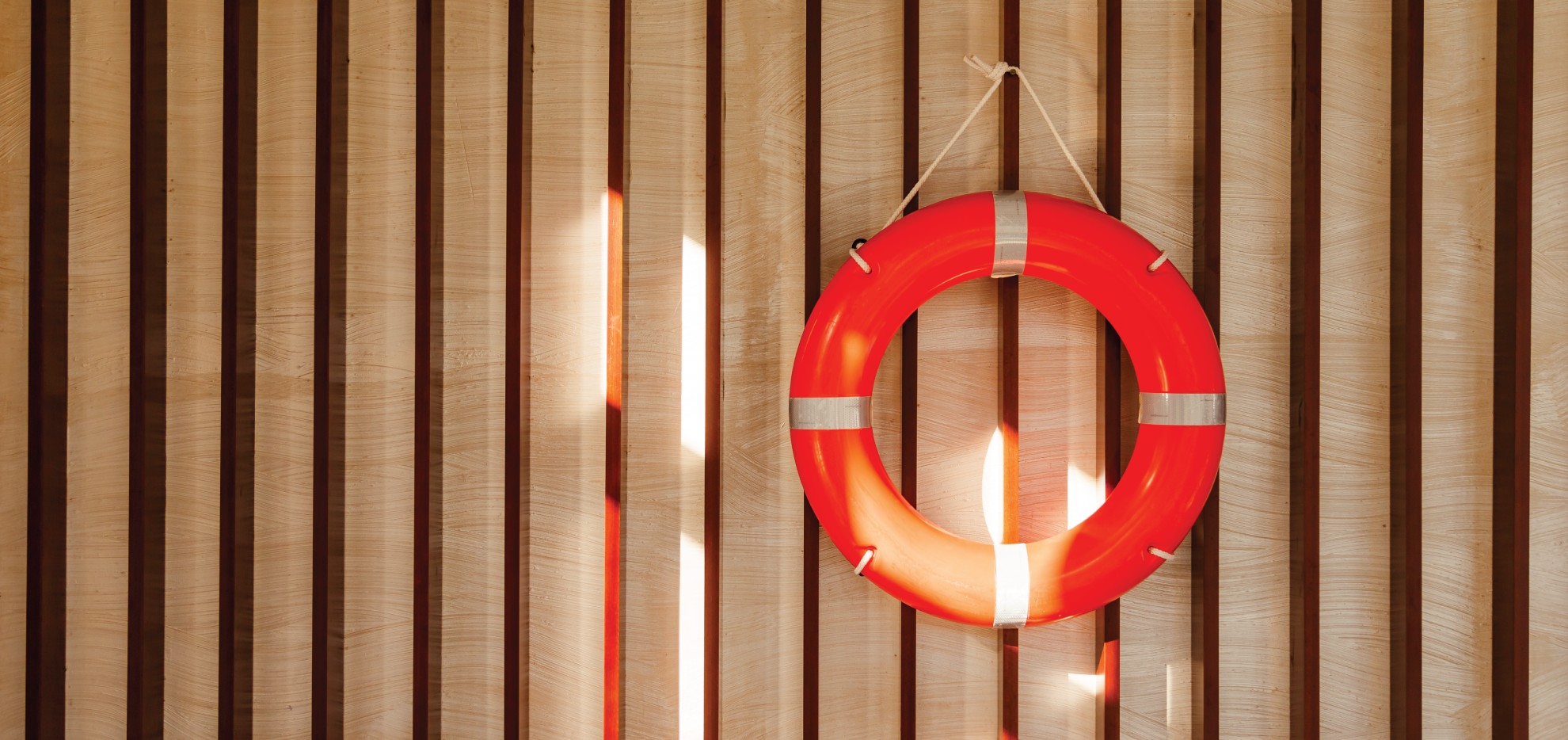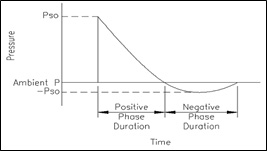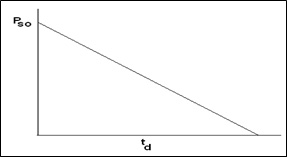Blast Resistant Design of Structures

| Industrial process plants handling hydrocarbons and other fuels have experienced accidental explosions. Care is taken to minimize explosions in the plant design, however when such incidents occur; the consequences can be very severe involving loss of life, financial losses and effecting public safety.
When a building in the plant is not located far enough from the blast source due to layout constraints; the building could get exposed to damaging overpressures during blasts. When such a building is occupied; or the building is expected to perform critical services wherein the personnel working in the building need to remain inside the building during the blast incident to regain control or to safely shut down the plant after the blast has occurred; or the building controls multiple units of the plant, then such buildings need to be designed as a blast resistant structure. Hence decision to design a building for blast event is based on criticality of the building, occupancy and closeness of the building to blast source. The design of structures to resist the effect of blast is very much different from conventional structural design and requires a thorough understanding of structural behavior in the in- elastic region, knowledge of ductility in structures and how to achieve ductility in structures. The design involves making the structure ductile so that it can absorb the blast energy and deform but not collapse. |
“Blast” refers to sudden release of energy into atmosphere, which creates an over-pressure. The pressure wave spreads from source on all directions and structures which are on the path of these waves experience a time-varying pressure load. The over-pressure gets reduced (attenuated) over distance of travel of blast wave.
QRA (Quantitative Risk Assessment / HAZOP) study is performed considering nature of blast source, atmospheric conditions etc., and outcome of the study brings out blast loading to be applied on the structure as a pressure time-history. Typically blast magnitude- Pso and blast duration- td are obtained as results of this study. Over time duration td; the pressure drops to zero and then falls to a negative pressure value. Magnitude of this negative pressure is generally less and hence is ignored for design purposes. For design purposes, a triangular pulse wave, with peak magnitude of Pso and time duration td is considered.
 |
 |
| Pressure-Time History of a Blast Wave | Triangular Pulse Load for Blast |
For the Pso and td values obtained from HAZOP, the Blast Load on Walls (front, side and rear) and Roof of Structure can be calculated and these are used to design the structure.
One of the methods of achieving Blast resistance is by means of a RCC box blast enclosure which is designed to resist blast load. All the critical internal components and rooms are planned inside the RCC enclosure. Generally an external lobby area or corridors are provided around the buildings which will act as a blast protection boundary for the interiors of the building. All external doors and windows provided on the enclosure wall shall be blast resistant. Exteriors of the buildings are generally made with simple finishing. Architectural / ornamental features which could become missiles are avoided and if used shall be made from light-weight material. Similarly non-structural elements like false-ceilings / metal blinds etc. are avoided in the interiors of the buildings. If provided, adequate care shall be taken for anchorage of these elements to the base structure.
Blast waves generally diverge away from convex surfaces and get dissipated, while they get more intensified in case of concave surfaces due to multiple reflections. Hence it is preferable to have a simple, fully-closed rectangular blast enclosure without Re–entrant corners.
While preparing the plant layout; important buildings like control buildings, buildings where costly equipment are located, or buildings where people work , should be located as far away as possible from potential blast source with shorter edge of building facing the blast wave so that the blast load on the structure can be the least.
The design of structures to resist the effect of blast is very much different from the conventional structural design. The main steps to be followed during Blast resistant design of structures are:-
- Functional planning of the structure with considerations for minimizing blast effects: Planning of Process/ architectural / structural layouts.
- Assessment of Blast load
- Design and detailing of members and connections for structures which are required to withstand blast loading including integrity check of over-all structure complying with associated codes & standards.
Blast resistant design of RCC/ Steel Structures involves the following:-
- Designing the structure to behave elastic under normal loads (other than blast load) and meet the normal serviceability criteria.
- Designing the over-all structure for stability and for elastic behavior (elements other than that directly facing blast) under blast load.
- Designing the structural elements to meet the performance criteria, under the blast load.
Choices on performance criteria of the building under blast event are:-
- Low Response: Most structural elements designed to remain elastic under blast event –buildings can be used with minimum repairs after the blast.
- Medium Response: Structural elements getting into partial in-elasticity (elasto-plastic range) under blast event –Damages are wide-spread and will involve significant repair cost and personnel working in the building can be safely evacuated out of the building after the blast. Building can be re-used with repair after the blast.
- High Response: Structural elements getting into fully plastic range. Repair cost will become equal to fresh construction cost after the blast. However men, equipment and materials can be safely evacuated out of the building.
Performance criteria to be chosen for plant buildings are decided based on their criticality. For each of the above performance criteria, element response criteria in terms of support rotation (θ) of the element and ductility (µa) are defined by code. Local design for blast loading for the elements will involve calculating and satisfying these limits.
Blast resistant design philosophy is to allow the elements to behave in the in-elastic range. To achieve this in-depth knowledge of structural design is required.
Design in the in-elastic range will result in the following:-
- Allow higher in-elastic energy absorption by providing higher ductility. In case of blast, the load is a short-duration impulse load; where-in design is done to equate internal energy of structure to external impulse rather than simple force equilibrium. Hence the focus of design is to increase the internal energy absorption by increasing the ductility / in-elastic deformation capacity, rather than increasing the strength of the element.
- Result in flexible elements, thereby increasing the time-period of reaction of the element to dynamic load. Since the blast time duration (td) is small, increasing the time-period of the elements will result in lesser internal forces experienced by the elements.
Hence it is prudent to design the blast resistant structural elements as flexible elements with adequate ductility, and allow a higher in-elastic deformation / rotation.
TCE have the knowhow to design RCC and Structural Steel structures to resist blasts and also to check existing structures for their capability to withstand blasts. In one of the recent projects TCE was involved in the retrofitting of an existing control building to make it blast resistant. Based on Quantitative Risk Assessment studies conducted for the Oil and Gas Facility, it was observed that certain existing facilities were to be upgraded for high levels of vapour blast. International competitors who were involved at initial feasibility stage had suggested for construction of additional blast enclosure (Cocoon). TCE’s approach was to first understand the strength of existing structure. TCE went beyond the normal methods of design to model the complete Non-linear behaviour of the structure, through which the existing strength of several components were proved to be safe. TCE made final recommendations with minimum modifications to the existing structure, which could be implemented without affecting the operations of the plant; thus bringing down the cost of blast up-gradation drastically.





